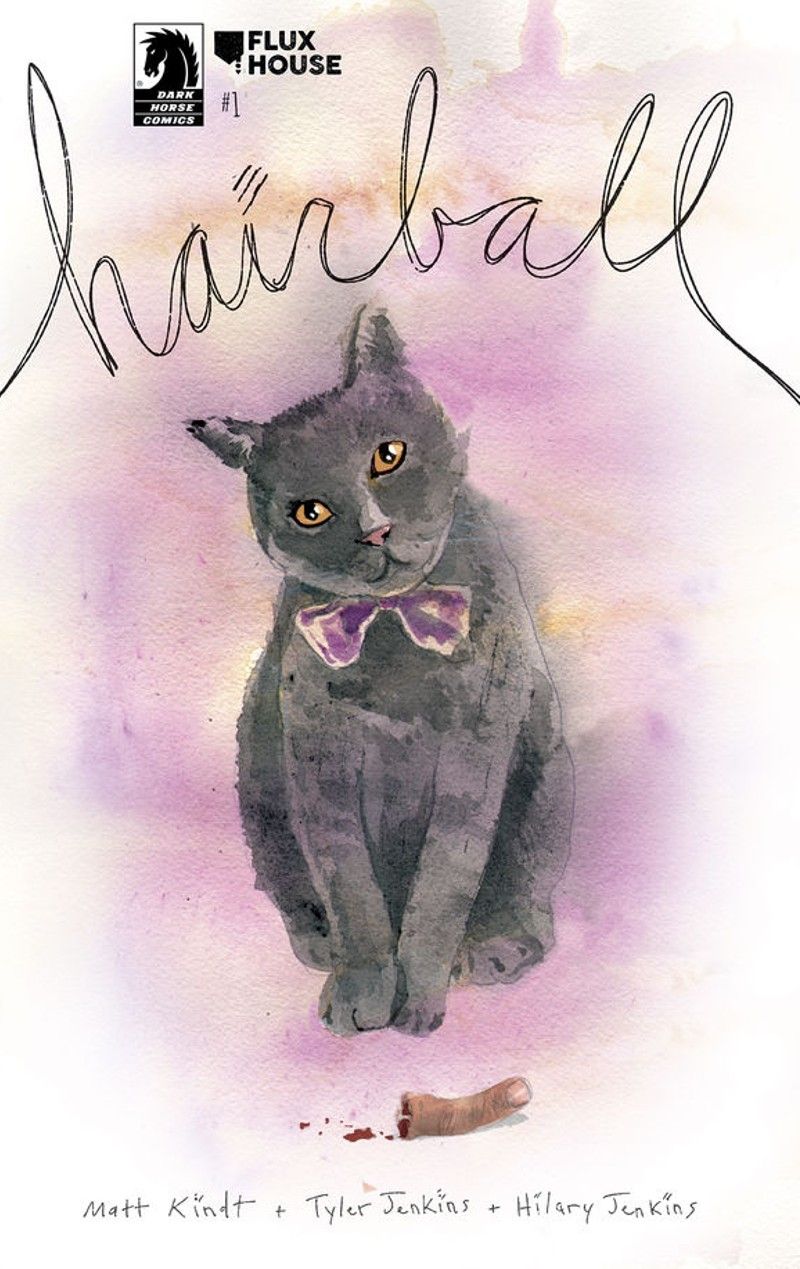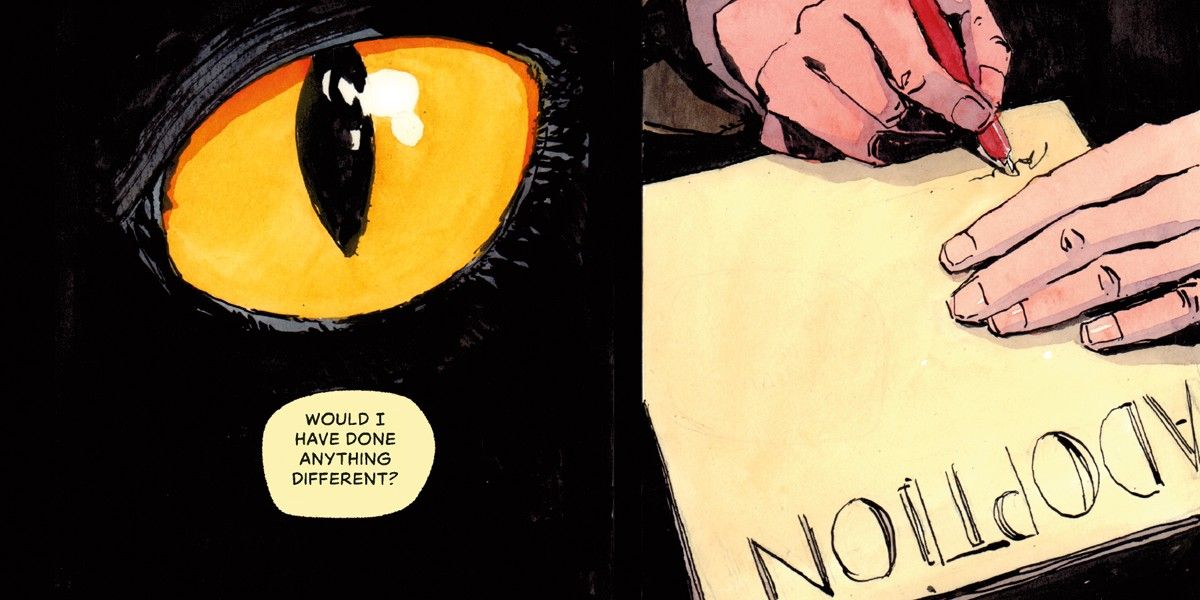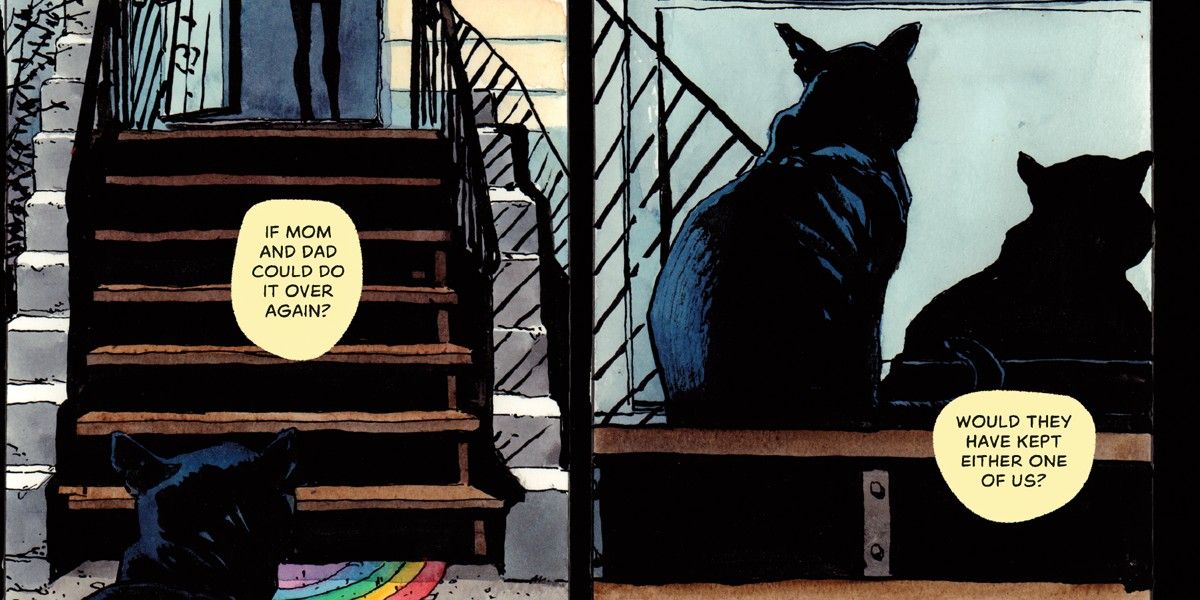Matt Kindt has been on a roll with titles like BRZRKR, MIND MGMT and Super Spy. Along with this, last year he launched a new imprint with Dark Horse Comics: Flux House. Under Dark Horse Comics and Flux House, Kindt teams up with Tyler Jenkins and Hilary Jenkins on Hairball Issue #1. Around the time Anna is adopted by her parents, they take in a stray cat called Bestie, and there is more to the cat than meets the eye. As Anna's parents fight one another, Anna is caught in the crossfires; however, Bestie takes advantage of this situation, aggravating the situation and possibly using supernatural forces for nefarious purposes in Hairball.
Advertised as Junji Ito meets Hayao Miyazaki, Hairball does capture the eerie, urban legend feeling often associated with Ito; however, the imagery isn't as haunting, and it's clear the true horror has yet to come. Kindt teases a slow-burn, supernatural tale where the real terror and tension comes from the family itself, not the fantastical forces at play. While there is intrigue in regard to what Bestie is up to, where the writing shines is with the fighting between the parents and how this impacts Anna.
While Anna's parents are not role models when she is in the room, they attempt to hold back some of their vitriol when they know she is around, but harmful jabs still happen. However, when Anna is not present, these two have at it with one another, airing out plenty of dirty laundry without realizing the walls are thin and Anna can hear the horrid and crushing things they say. While the dialogue does not put these parents in a positive light, that's the point, as they are the true heart of this nightmare. They create the toxic environment Bestie plays in, and Kindt quickly characterizes the relationship and environment they've facilitated through the spats the couple has throughout Hairball #1.
What also works in Hairball's favor is how Tyler Jenkins approaches spacial awareness. While the parents are unaware that Anna is listening in on them, the readers are, and can feel how isolated the young girl is. Whether it's a panel of her curled on top of the stairs, or a page dedicated to Bestie finding Anna trying to silence out the noises, Tyler Jenkins sells her solitude and sadness. This also establishes why Bestie is so important to her, as this cat is the one true support system Anna can rely on, which may come back to haunt her down the line given Bestie's nefarious behavior.
On top of this, Tyler Jenkins tackles Hairball's lettering, and the way the bubbles are spaced apart further creates a feeling of isolation. Most panels have one to two bubbles, which lets the art speak for itself and makes the panels feel more spacious, so when Anna is sitting alone, she truly feels alone. While it can get confusing at times in regard to who is saying what when it comes to the parents' fights, the impact is still there.
Tyler Jenkins and Kindt also highlight how these fights are ongoing through clever therapy secessions. Every few pages of Hairball, there is a four-panel spread of Anna sitting in the dark talking to presumably a therapist. Each panel is identical, her face emotionless, and Anna explains what is happening behind closed doors. As the comic progresses, her clothes change to show the passage of time, and her words get more ominous.
Meanwhile, Hilary Jenkins's color work in Hairball is eye catching. The star is Bestie, specifically Bestie's yellow eyes, which command attention in the darker blue environments. Along with that, in the therapy sessions, the background is pitch black while Anna is in warm lighting, a drastic and telling contrast to how readers seen at her lowest at home.
Dark Horse Comics' Hairball #1 promises to be a supernatural tale, but readers have to wait for the scary story to unfold. However, Kindt and the Jenkins are clever to take a slow and steady approach to this comic, establishing early on that the true horrors may not come from things that go bump in the night but from the tensions building in a struggling home.



